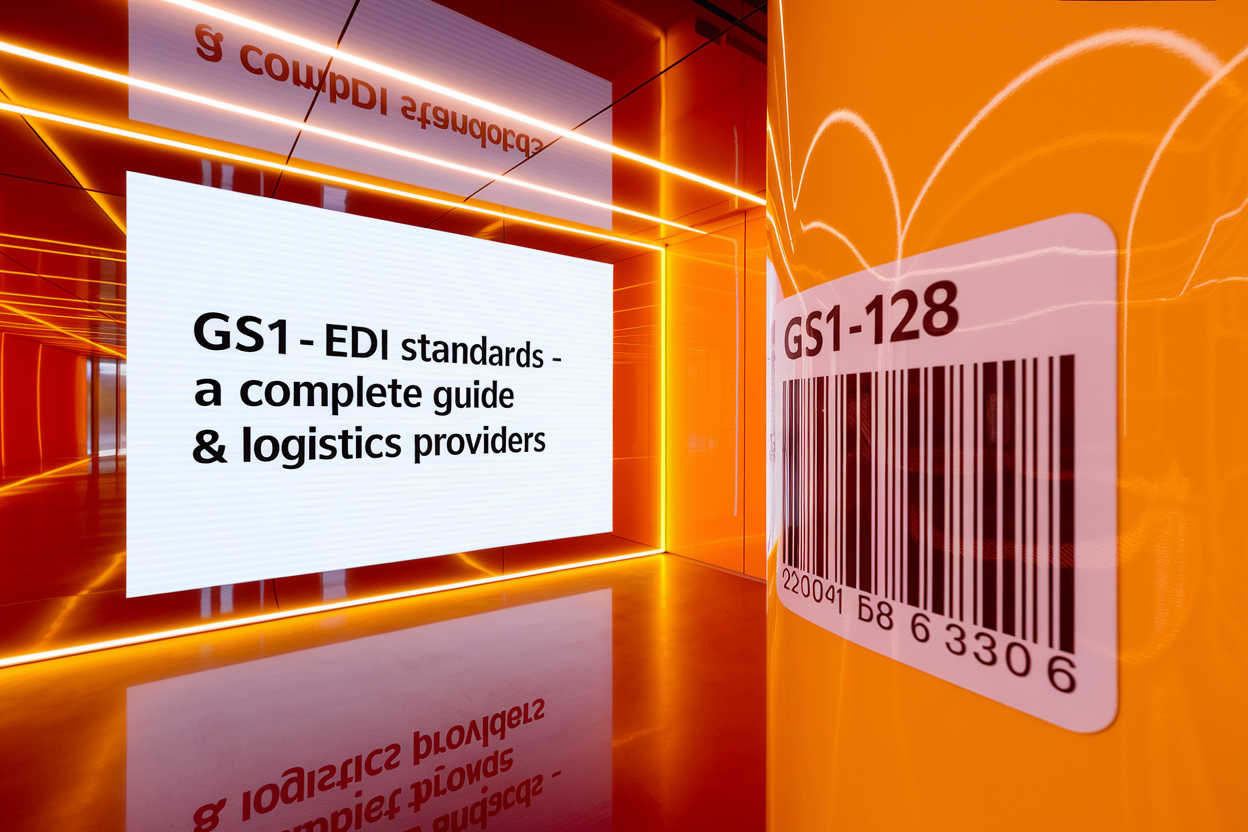Unlocking the Power of EDI 856: A Comprehensive Guide to Streamline Your Supply Chain

In today’s fast-paced business environment, optimizing your supply chain is essential to maintain a competitive edge. One powerful tool that can streamline your operations is the EDI 856, also known as the Advanced Shipment Notice (ASN). By unlocking the potential of this electronic data interchange (EDI) document, you can gain greater visibility into your supply chain, improve order accuracy, and enhance customer satisfaction.
In this comprehensive guide, we will demystify the EDI 856 and show you how to leverage its power to streamline your supply chain. Whether you’re a retailer, distributor, or manufacturer, implementing the EDI 856 can revolutionize the way you manage your inventory and shipments.
From understanding the structure and purpose of the EDI 856 to implementing best practices for generating and receiving ASNs, this guide will provide you with the knowledge and tools you need to optimize your supply chain operations. Discover how to reduce errors, avoid costly chargebacks, and enhance collaboration with your trading partners through effective use of the EDI 856.
Get ready to unlock the power of the EDI 856 and take your supply chain management to new heights.

Understanding the importance of streamlining your supply chain
In today’s fast-paced and highly competitive business landscape, the ability to efficiently manage your supply chain can make all the difference. Whether you’re a retailer, distributor, or manufacturer, optimizing your supply chain operations is crucial to maintaining a competitive edge, reducing costs, and enhancing customer satisfaction.
Streamlining your supply chain involves implementing strategies and technologies that improve visibility, reduce errors, and enhance collaboration with your trading partners. By doing so, you can minimize the risk of stockouts, expedite deliveries, and ensure that your products reach the right customers at the right time. This, in turn, can lead to increased customer loyalty, improved profitability, and a stronger overall market position.
One of the most powerful tools in the supply chain management arsenal is the EDI (Electronic Data Interchange) 856, also known as the Advanced Shipment Notice (ASN). This electronic document plays a vital role in optimizing the flow of goods and information throughout the supply chain. By unlocking the full potential of the EDI 856, you can gain greater visibility, improve order accuracy, and enhance collaboration with your trading partners – all of which are essential for streamlining your supply chain operations.
How EDI 856 can help streamline your supply chain
The EDI 856, or Advanced Shipment Notice, is an electronic document that provides detailed information about an upcoming shipment. This includes details such as the items being shipped, the quantities, the expected delivery date, and any relevant tracking information. By sharing this information electronically, the EDI 856 helps to bridge the gap between the moment an order is placed and the moment it is received, providing all stakeholders with a clear and up-to-date view of the supply chain.
One of the key benefits of the EDI 856 is its ability to enhance visibility throughout the supply chain. When a trading partner sends an EDI 856, the recipient can quickly and accurately track the status of an order, anticipate incoming shipments, and make informed decisions about inventory management and logistics. This increased visibility can help to reduce the risk of stockouts, minimize the need for expedited shipments, and improve overall supply chain efficiency.
Moreover, the EDI 856 helps to improve order accuracy by providing a standardized, electronic format for sharing shipment details. This reduces the risk of manual errors, such as incorrect item quantities or delivery dates, which can lead to costly chargebacks and damaged customer relationships. By automating the exchange of this critical information, the EDI 856 helps to ensure that the right products are delivered to the right customers at the right time.
Key components of an EDI 856 transaction
The EDI 856 transaction is composed of several key components that work together to provide a comprehensive view of an upcoming shipment. These components include:
1. Header Information: This section includes details such as the shipment number, the trading partner’s identification, and the expected delivery date.
2. Line Item Details: This section provides a detailed breakdown of the items being shipped, including the item number, description, quantity, and any relevant packaging information.
3. Shipment Tracking: This section includes details about the shipment, such as the carrier, the tracking number, and the expected delivery date.
4. Additional Information: Depending on the specific requirements of the trading partners, the EDI 856 may also include additional information, such as special handling instructions or references to related documents (e.g., purchase orders).
By ensuring that all of these key components are accurately captured and communicated, the EDI 856 transaction can provide a clear and comprehensive picture of an upcoming shipment, enabling all stakeholders to effectively plan and manage their supply chain operations.
It’s important to note that the specific structure and content of the EDI 856 may vary depending on the industry, the trading partners involved, and any applicable standards or regulations. However, the core components outlined above are generally present in most EDI 856 transactions, providing a consistent framework for streamlining supply chain operations.
Benefits of using EDI 856 in your supply chain operations
Implementing the EDI 856 in your supply chain operations can unlock a wide range of benefits that can help to streamline your processes and enhance your overall competitiveness. Some of the key benefits include:
1. Improved Visibility: The EDI 856 provides real-time visibility into the status of shipments, allowing you to anticipate incoming deliveries, manage inventory more effectively, and make informed decisions about logistics and fulfillment.
2. Enhanced Order Accuracy: By automating the exchange of shipment details, the EDI 856 reduces the risk of manual errors, such as incorrect item quantities or delivery dates, ensuring that the right products are delivered to the right customers.
3. Reduced Chargebacks: Accurate and timely EDI 856 data can help to avoid costly chargebacks from customers due to delivery discrepancies or other supply chain issues.
4. Improved Collaboration: The EDI 856 facilitates seamless communication and collaboration between trading partners, enabling them to work together more effectively to optimize supply chain operations.
5. Increased Efficiency: By automating the exchange of shipment information, the EDI 856 can help to streamline various supply chain processes, such as receiving, inventory management, and invoicing, ultimately leading to cost savings and improved operational efficiency.
These benefits can have a significant impact on your overall supply chain performance, helping you to reduce costs, improve customer satisfaction, and maintain a competitive edge in your industry.
Implementing EDI 856: Step-by-step guide
Implementing the EDI 856 in your supply chain operations can be a straightforward process, but it does require careful planning and coordination with your trading partners. Here’s a step-by-step guide to help you get started:
1. Assess Your Current Supply Chain Processes: Begin by evaluating your existing supply chain processes and identifying areas where the EDI 856 can provide the most value. This may involve analyzing your current order fulfillment workflows, inventory management practices, and communication with trading partners.
2. Identify Your Trading Partners: Determine which of your trading partners (e.g., suppliers, customers, logistics providers) are capable of exchanging EDI 856 transactions and prioritize those relationships for implementation.
3. Establish EDI Compliance: Work with your trading partners to ensure that you are both compliant with the necessary EDI standards and protocols, such as the ANSI X12 standard for the EDI 856 transaction.
4. Develop Your EDI 856 Mapping and Integration: Create a detailed mapping of the EDI 856 transaction to your internal systems and processes, ensuring that the data is seamlessly integrated into your existing supply chain management workflows.
5. Test and Validate Your EDI 856 Implementation: Conduct thorough testing with your trading partners to ensure that the EDI 856 transactions are being exchanged accurately and efficiently. This may involve sending and receiving sample ASNs, verifying data accuracy, and addressing any issues that arise.
6. Train Your Team: Provide comprehensive training to your employees, including those involved in order fulfillment, inventory management, and customer service, to ensure that they understand how to effectively utilize the EDI 856 data in their day-to-day operations.
7. Monitor and Continuously Improve: Regularly review your EDI 856 implementation, monitor its performance, and make adjustments as needed to optimize your supply chain operations. This may involve identifying and addressing any recurring issues, as well as exploring opportunities to further streamline your processes.
By following this step-by-step guide, you can ensure a smooth and successful implementation of the EDI 856 in your supply chain operations, unlocking the full potential of this powerful tool to streamline your processes and enhance your overall competitiveness.
Common challenges and how to overcome them when using EDI 856
While the EDI 856 can be a powerful tool for streamlining your supply chain operations, there are also some common challenges that you may encounter during the implementation and usage of this electronic document. Here are some of the most common challenges and strategies for overcoming them:
1. Data Accuracy and Completeness: Ensuring that the EDI 856 data is accurate and complete is critical for effective supply chain management. Challenges may arise from incorrect item numbers, quantities, or delivery dates. To overcome this, establish clear data validation processes, conduct regular audits, and work closely with your trading partners to address any discrepancies.
2. Trading Partner Compliance: Successful implementation of the EDI 856 requires all trading partners to be compliant with the necessary EDI standards and protocols. This can be a challenge, especially when working with smaller or less technologically-advanced partners. To address this, provide guidance and support to your trading partners, offer training, and consider alternative communication methods (e.g., web portals) for those who may not be able to exchange EDI 856 transactions directly.
3. Integration with Internal Systems: Integrating the EDI 856 data with your existing supply chain management systems can be a complex and time-consuming process. To streamline this integration, work closely with your IT team to develop a comprehensive mapping and integration strategy, and consider investing in EDI-specific software or services to facilitate the process.
4. Lack of Visibility and Transparency: In some cases, trading partners may be hesitant to share detailed shipment information, which can limit the visibility and transparency that the EDI 856 is designed to provide. To overcome this, emphasize the mutual benefits of increased collaboration and transparency, and work to build trust and open communication with your trading partners.
5. Resistance to Change: Implementing the EDI 856 may require changes to established supply chain processes and workflows, which can be met with resistance from employees or trading partners. To address this, provide comprehensive training and change management support, and clearly communicate the benefits of the EDI 856 implementation to all stakeholders.
By proactively addressing these common challenges and implementing effective strategies to overcome them, you can ensure a successful and sustainable implementation of the EDI 856 in your supply chain operations.
Best practices for optimizing your supply chain with EDI 856
To maximize the benefits of the EDI 856 and optimize your supply chain operations, consider the following best practices:
1. Establish Clear EDI 856 Policies and Procedures: Develop a comprehensive set of policies and procedures that outline the requirements and expectations for EDI 856 usage, including data accuracy, timeliness of communication, and compliance with industry standards.
2. Collaborate Closely with Trading Partners: Foster strong relationships and open communication with your trading partners to ensure that the EDI 856 data is being exchanged accurately and efficiently. This may involve regular meetings, joint problem-solving sessions, and the establishment of mutually agreed-upon performance metrics.
3. Leverage EDI 856 Data for Improved Decision-Making: Utilize the wealth of information provided in the EDI 856 to make more informed decisions about inventory management, logistics, and supply chain optimization. Integrate the EDI 856 data with your business intelligence and analytics tools to gain deeper insights and identify areas for improvement.
4. Automate EDI 856 Processes: Invest in EDI-specific software or services to streamline the exchange and integration of EDI 856 data, reducing the risk of manual errors and improving the efficiency of your supply chain operations.
5. Continuously Monitor and Optimize EDI 856 Performance: Regularly review the performance of your EDI 856 implementation, identifying any recurring issues or areas for improvement. Use this information to make adjustments to your policies, procedures, and integrations, ensuring that the EDI 856 continues to provide maximum value to your supply chain operations.
6. Provide Comprehensive Training and Support: Ensure that your employees, including those in order fulfillment, inventory management, and customer service, are well-versed in the use and interpretation of EDI 856 data. Offer ongoing training and support to help them leverage this information effectively in their day-to-day operations.
7. Stay up-to-date with Industry Standards and Regulations: Keep informed about any changes or updates to the EDI 856 standard, as well as any industry-specific regulations or requirements that may impact your supply chain operations. Proactively adapt your EDI 856 implementation to ensure compliance and maintain a competitive edge.
By adopting these best practices, you can unlock the full potential of the EDI 856 and optimize your supply chain operations, driving greater efficiency, improved customer satisfaction, and a stronger overall competitive position in your market.
To further illustrate the power of the EDI 856 in streamlining supply chain operations, let’s explore a few real-life case studies:
Case Study 1: Improving Inventory Management for a Retail Giant
A leading retail chain was struggling with frequent stockouts and overstocking due to a lack of visibility into its supply chain. By implementing the EDI 856, the company was able to gain real-time visibility into incoming shipments, allowing them to better anticipate demand and optimize their inventory levels. The result was a 20% reduction in inventory carrying costs, a 15% decrease in stockouts, and a significant improvement in customer satisfaction.
Case Study 2: Enhancing Collaboration and Reducing Chargebacks for a Manufacturer
A major manufacturer was facing ongoing challenges with order accuracy and costly chargebacks from its retail customers. By leveraging the EDI 856, the company was able to improve communication and collaboration with its trading partners, ensuring that shipment details were accurately exchanged. This led to a 35% reduction in chargebacks and a 12% improvement in on-time deliveries, strengthening the company’s relationships with its customers and enhancing its overall supply chain efficiency.
Case Study 3: Streamlining Receiving Processes for a Logistics Provider
A third-party logistics provider was struggling with inefficient receiving processes, which resulted in delays and increased labor costs. By implementing the EDI 856, the company was able to automate the receiving process, reducing the time required to process each shipment by 25%. This, in turn, led to a 10% reduction in overall operating costs and a significant improvement in customer satisfaction.
These case studies illustrate the tangible benefits that organizations can achieve by leveraging the power of the EDI 856 to streamline their supply chain operations. From improved inventory management and reduced chargebacks to enhanced collaboration and streamlined receiving processes, the EDI 856 can be a transformative tool for businesses of all sizes and industries.







